Visit the art blog at thematicconversion.tumblr.com and the relog blog at evtrained.tumblr.com.
92 posts
04 Of 05 - Modern Compendium: Kishin Family, Part 4 - Genma Johnny Appleseed
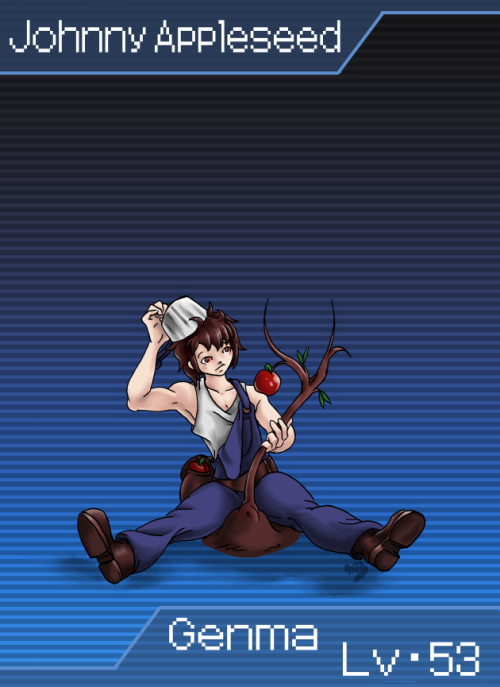
04 of 05 - Modern Compendium: Kishin Family, Part 4 - Genma Johnny Appleseed
I usually try to shy away from including figures in the Compendium that were actual people, but much like Tokisada in SMTIV, Johnny Appleseed sits at such a crossroad of mythology and culture that his omission would be glaring.
Born in the late 18th century as John Chapman, Johnny Appleseed is unique in the company of modern American folklore in that most of the stories told about him are in fact true. He did travel most of the United States of his time, planting apples, and doing missionary work. It seems he was widely respected by the Native Americans, being allowed to move more or less freely through the lands of several different tribes.
The mythological legacy of Johnny Appleseed is heavily tied in with several significant parts of American identity; He is seen as a settler heading west, expanding the US, personifying self-reliance and the concept of Manifest Destiny; His kinship with the land and animals is a big part of stories told about him in the service of conservation and land management; And of course his missionary work is heavily emphasized by those who see America first and foremost as a Christian nation.
As a perennially popular American figure, Johnny Appleseed fits reasonably high in the Genma family. Really, the only thing that keeps him from being even higher is that he’s never really seen as a force to be reckoned with, but rather as someone who would rather avoid conflict.
For more info on this and every other demon in the Modern Compendium, have a look at our extensive and growing Data File, right over (here)!
-
 banjodude reblogged this · 9 years ago
banjodude reblogged this · 9 years ago -
 abstractscarecrow reblogged this · 9 years ago
abstractscarecrow reblogged this · 9 years ago -
 abstractscarecrow liked this · 9 years ago
abstractscarecrow liked this · 9 years ago -
 thedarkfiddler reblogged this · 9 years ago
thedarkfiddler reblogged this · 9 years ago -
 historyclasses reblogged this · 9 years ago
historyclasses reblogged this · 9 years ago -
 deadlydavis-blog liked this · 9 years ago
deadlydavis-blog liked this · 9 years ago -
 bellonanj73 liked this · 9 years ago
bellonanj73 liked this · 9 years ago -
 xerozohar reblogged this · 9 years ago
xerozohar reblogged this · 9 years ago -
 xerozohar liked this · 9 years ago
xerozohar liked this · 9 years ago -
 imboredofthisplace liked this · 9 years ago
imboredofthisplace liked this · 9 years ago -
 rougealienpirate liked this · 9 years ago
rougealienpirate liked this · 9 years ago
More Posts from Historyclasses
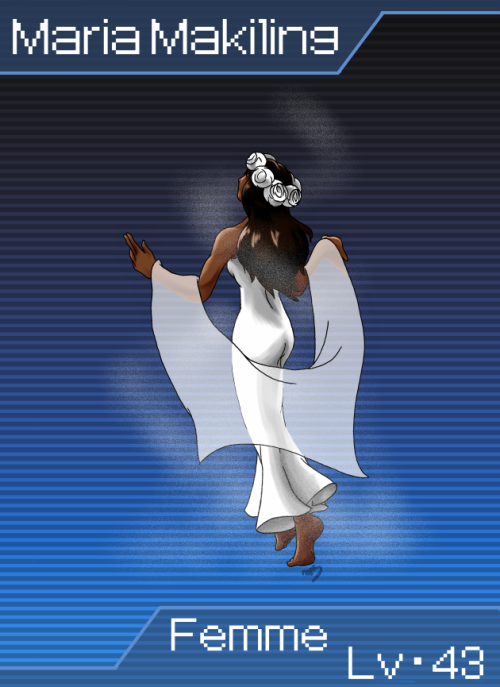
05 of 05 - Modern Compendium: Deity Family, Part 2 - Femme Maria Makiling
A major figure in the folk mythology that surrounds Mount Makiling in the central Philippenes, Maria Makiling is what is known as a Diwata, nature spirits roughly analogous to a nymph or fairy. Maria herself has roots that go back to the native cultures that inhabited the islands of the Philippenes before the European invasions, but as far as we can tell, she has always been seen as a protector of the mountain and surrounding areas.
What I find fascinating about Maria Makiling is how little the modern world has changed her. People that live around Mount Makiling still report seeing a dark haired, dark skinned woman in white wandering the wilderness, aiding those who respect and revere nature, and cursing those who despoil it. She’s even said to confuse those who don’t clean up after their campfires and picnics, turning the forest into an inescapable maze until they tidy up after themselves.
As an eternally young woman who is constantly pursued, but who only allows those she deems worthy to find her, Maria Makiling is eminently suited to the Femme family. Her kind nature does make her a bit of an unusual figure in the normally very offensively-focused Femme family; she’s more interested in healing spells and a few status effects than in actually dealing damage.
For more info on as well as links to every demon in the Modern Compendium, have a look at our extensive Data File, right over (here).
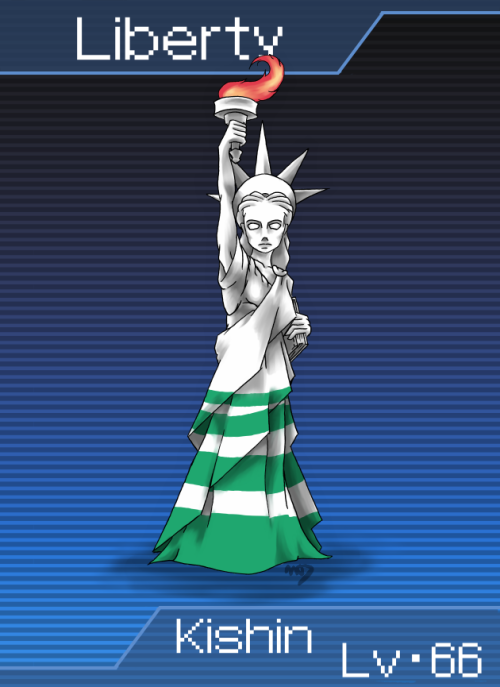
01 of 05 - Modern Compendium; Kishin Family, Part 4 - Kishin Liberty
First off, I have to apologize; this was supposed to go up on the 4th. I always underestimate how busy the holidays can become. But the rest of the month’ll be full of Mom and Apple Pie, so it’s not a total loss. ^^
Anyway, Liberty! I actually considered doing Uncle Sam, but it turns out that Lady Liberty actually has a long – and I mean long – history behind her. Way back in Roman times, they worshiped a figure called Libertas, a goddess seen as so powerful that she was often equated with Sol Invictus, one of the central gods of the late Roman Empire.
The Statue of Liberty was a gift from France, where Liberty had come to prominence during the French Revolution. Hell, for a time Notre Dame was actually re-christened as a sort of temple to the “Cult of Reason,” and who did they turn to for a replacement for the Virgin Mary? Liberty.
The figure of the statue itself is actually used as a national personification by both the United States and France, where she is sometimes called Marianne. For a while, Americans knew her as Columbia, too, but that practice mostly fell by the wayside as Uncle Sam came to popularity in the 1930s and 40s.
Liberty is an incredibly popular figure in modern society. She’s appeared on everything from money to postage stamps to little souvenir figurines. And if having your likeness in millions of homes isn’t worship, I don’t know what is. Liberty is incredibly powerful, but she’s actually the second highest level Kishin. And the one demon above her is… Special.
For more information on this and every other demon in the Modern Compendium, have a look at our mysterious Data File, right over (here).
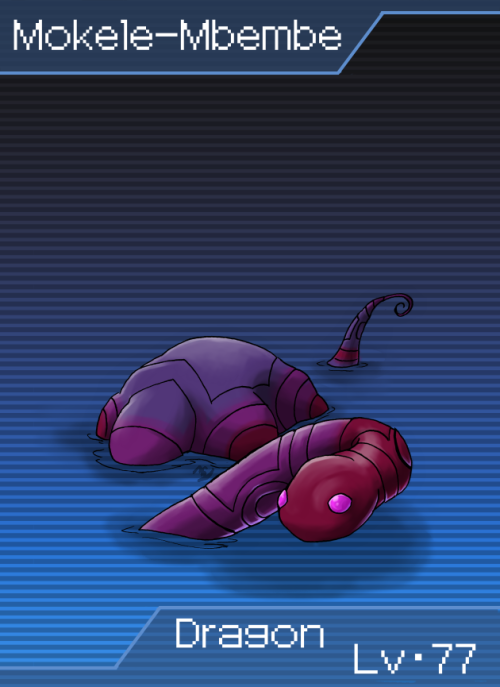
04 of 05 - Modern Compendium: Kishin Family, Part 5 - Dragon Mokele-Mbembe
One of the most famous Cryptids, Mokele-Mbembe is actually an excellent example of the way cultural mythologies color the way different societies interact. Physically, it straddles the divide between lost beast and sea serpent, while the mythology associated with it flits between pseudoscience and spiritualism.
See, in the Congo River basin region of Africa, locals have stories of a massive, wrinkled beast that wades in the rivers – the name “Mokele-Mbembe” actually means “the one who stops the flow of rivers.” They describe it as a nature spirit, a territorial beast, and a guardian of the water.
However, to westerners, the Mokele-Mbembe is something else. Explorers who visited the region in the early 20th century heard tales of a wrinkled, long-necked herbivore in the waters and, rather than taking the local’s stories at face value, decided they were describing a sauropod dinosaur. Since then, the Mokele-Mbembe has been taken up by Cryptozoologists as a likely living fossil, a survivor from prehistory when dinosaurs roamed the earth.
There is, of course, little evidence to support this theory, but the effect that the overlay of Cryptid mythology on Mokele-Mbembe has had on the imagination of the west is undeniable. Stories of long-lost dinosaurs in Africa have influenced countless popular movies, from King Kong to Land of the Lost, and helped to establish Africa in the minds of westerners as a place where mystical beasts wandered free.
In Shin Megami Tensei terms, Mokele-Mbembe is a mid-range Dragon. Like most of its family, the critter is largely defensive in nature, but it is also one of the few demons to learn Doping, making it a valuable addition to any player’s Compendium.
For more info on this and every other demon in the Modern Compendium, have a look at our Data File, right over (here).
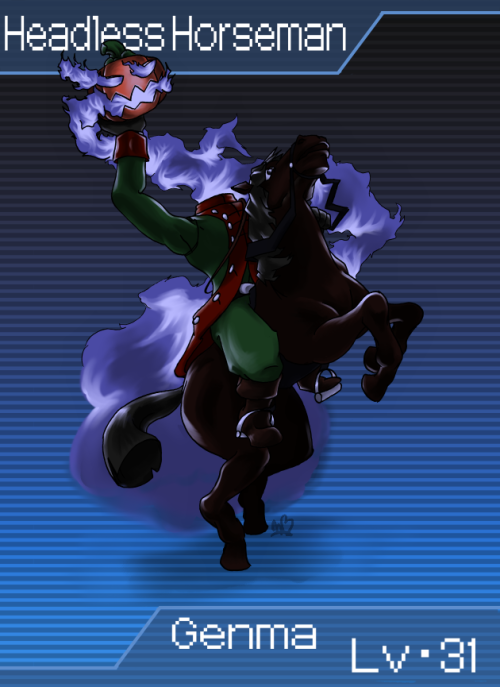
01 of 05 - Modern Compendium: Deity Family, Part 4 - Genma Headless Horseman
Holy crap that took a lot longer than I expected. I did not have a full appreciation for the complexity of this design. @_@
But yes! The Headless Horseman! Introduced to the United States in the early 19th century by Washington Irving’s The Legend of Sleepy Hollow, the Horseman is based on a long-standing tall tale that has surprisingly deep roots in history. Irving’s version of the Headless Horseman is said to be the ghost of a Hessian mercenary who had his head blown off by cannon fire in the Revolutionary War, but there are tales of Horsemen as far back as the Middle Ages. In fact, there’s a good chance that early tales of headless riders were inspired by the long-standing Irish fairy story of the Dullahan, an animated suit of armor that rode a black steed through the countryside, and who could kill simply by speaking the victim’s name.
The Legend of Sleepy Hollow has always been a popular American myth, especially around Halloween, and its impact on pop culture is pretty easy to see. The Horseman appears on Halloween-themed merchandise every year, there’s a popular Disney short about him – hell, there are even high school football teams that have the Horseman as a mascot, and if that doesn’t say mainstream acceptance, I don’t know what does. The Headless Horseman is unique in one interesting way, though; it is one of the few Halloween monsters that have been able to resist the slide into kitsch. You might see cutesy ghosts and witches at Halloween, for example, but a cute Horseman is pretty rare.
As a uniquely American monster, the Headless Horseman fits neatly into the Genma family. He is right at the bottom, but the Horseman is a powerful demon for its level, and would probably qualify as one of the early special Fusions.
For more info on this and every other demon in the Modern Compendium, have a look at our extensive Data File, right over (here).
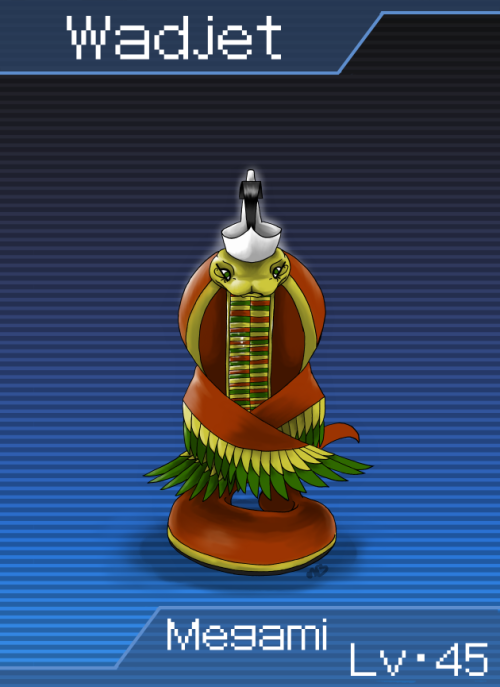
02 of 05 - Modern Compendium: Kishin Family Part 4 - Megami Wadjet
Although modern matriarchal religions tend to simply create the religious figures they need, many branches of these religions are not above adopting gods and goddesses from other belief systems. Wadjet is a good example of this. Originally a goddess of protection and motherhood from the Lower Kingdom of Egypt, Wadjet has been adopted by some practitioners of Neopaganism. Surprisingly, there’s fairly little alteration between her old home and the new one; she’s still seen as a guardian, particularly of expectant mothers, and she’s still seen as a winged snake.
Interestingly, in addition to being a goddess of motherhood, Wadjet was also the personification of the Eye of Horus. The Eye was an intensely important symbol to ancient Egyptians, symbolizing the protection of the gods and the wisdom of Horus himself. Modern Neopagans seem to have adopted this idea almost without alteration; whether this is out of respect or because Egyptian religion was in vogue when many goddess religions came to prominence will probably never be clear. It is, however, an interesting interaction between two societies separated by thousands of years, and a good reminder that no belief system is dead if someone – anyone – remembers it.
Wadjet sits fairly low in the Megami family; fact is, belief in her just isn’t that widespread. She is an exemplar of the Megami family, though. Wadjet sports high Magic, and comes loaded with powerful healing and defensive magic for her level. Personally, I see her as being one of those annoying enemies you tend to meet about midway through the game that heals the enemy team. Always target the healer first!
For more info on this and every other demon in the Modern Compendium take a look at the Data File, right over (here).